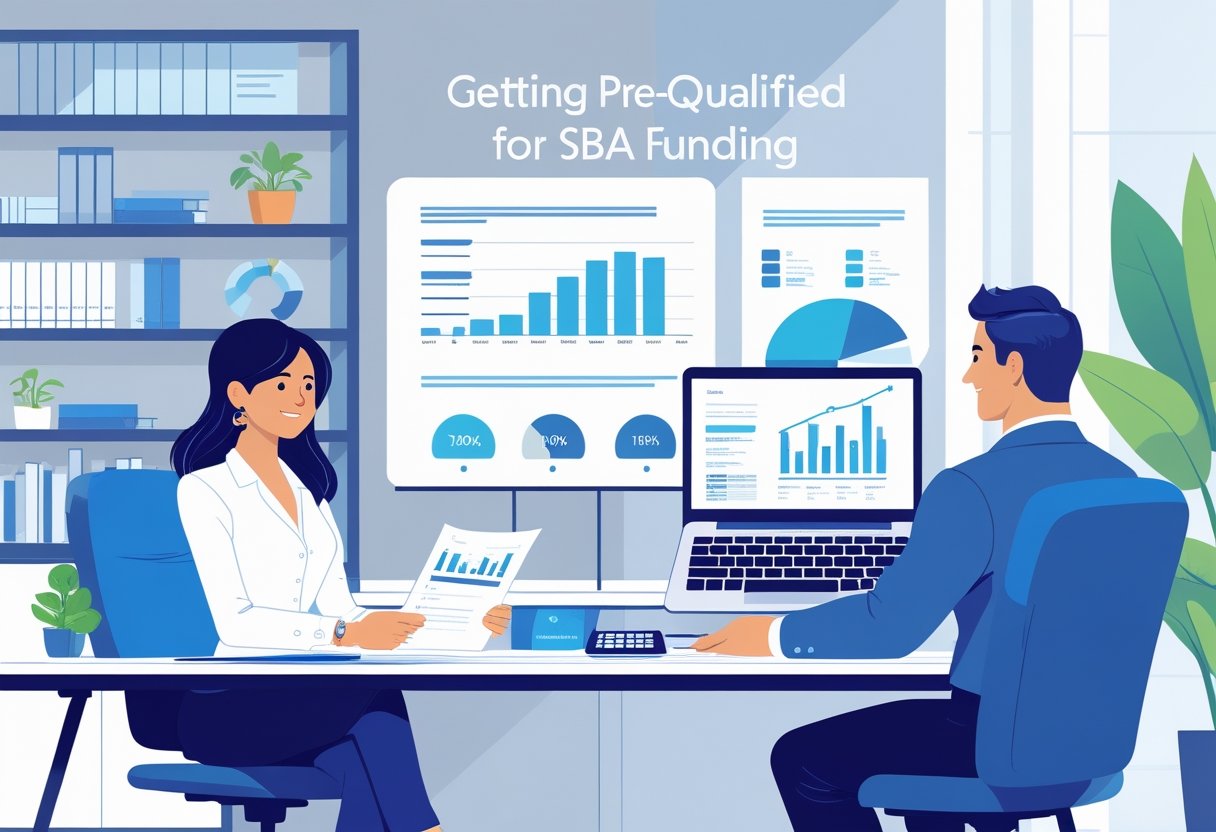
Silent Business Partner: Their Role & Benefits Explained
A silent business partner can be a valuable asset for your company. They invest capital in your business without involving themselves in daily management, allowing you to focus on growth while providing them with a share of the profits. This arrangement, known as a silent partnership, benefits both parties, giving you the funding needed to expand while they receive passive income.
Engaging a silent partner can significantly enhance your business’s potential. By leveraging their financial resources, you can access new opportunities without diluting your control over operations. This type of partnership is ideal if you seek investment without the complexities of traditional partnerships, which often require equal input in decision-making.
At SBA Central, we specialize in helping business owners navigate the world of silent partnerships and funding solutions. With the #1 SBA Resource Library on the internet, we provide a wide range of tools and expertise, ensuring you have everything needed to make informed decisions and maximize your business’s potential.
What Is a Silent Business Partner?
A silent business partner provides capital to a business without participating in its day-to-day operations. Understanding their characteristics and roles is crucial for anyone considering or entering a business partnership.
Key Characteristics of Silent Partners
Silent partners are primarily investors in a business partnership. They contribute capital, which can be instrumental for starting or growing a business.
These partners usually do not involve themselves in management decisions. Their lack of participation allows them to remain uninvolved in operational issues, making them “silent.”
Key Characteristics Include:
- Limited involvement in daily operations
- Contribution of financial resources
- No management responsibilities
- Potential for a share of profits
By defining these characteristics, you can better navigate the dynamics of a business partnership involving silent investors.
Role Differences: Silent Partner vs. General Partner
Silent partners differ significantly from general partners in a business partnership. A general partner actively manages the business, making critical decisions and handling operations.
In contrast, a silent partner’s role is restricted to financial investment. They do not engage in decision-making or management activities.
Key Differences:
FeatureSilent PartnerGeneral PartnerInvolvementMinimalSignificantDecision-makingNoneFull authorityProfit shareBased on agreementBased on operational input
This distinction is essential for understanding how each type of partner contributes to the overall success of the business.
Silent Investors in Business Partnerships
Silent investors play a vital role in funding business ventures. Their investment allows businesses to expand without diluting ownership for active partners.
These investors typically seek a return on their investment, which warrants careful consideration of profit sharing arrangements.
Silent investors are ideal for entrepreneurs who prefer to maintain operational control while still accessing necessary funds.
Benefits of having a silent investor include:
- Access to capital without sacrificing control
- Opportunity for collaboration with a financial backer
- A focused strategic partnership without operational conflict
Utilizing silent investors can significantly impact a business’s growth trajectory and financial health.
For more insights and resources on business partnerships, consider leveraging services from SBA Central, the #1 SBA Resource Library on the Internet.
Structures of Silent Partnerships
Silent partnerships can take various forms, each affecting liability and management dynamics. Understanding these structures will help you navigate your options and responsibilities in a business partnership.
Limited Partnerships and Liability
In a limited partnership, there are at least one general partner and one or more limited partners. The general partner manages the business and has unlimited liability, meaning they are personally responsible for the company debts. Conversely, limited partners contribute capital but are not involved in daily operations, enjoying limited liability instead. This means their financial risk is confined to their investment amount.
Limited partnerships protect the limited partners by shielding them from personal liability, making this structure attractive for investors who prefer a hands-off approach. It’s essential to draft a clear partnership agreement to outline roles, responsibilities, and profit-sharing.
General Partnerships vs. Limited Partnerships
In a general partnership, all partners share equal responsibility for managing the business and its debts. Each partner has unlimited liability, which means personal assets can be used to settle company debts. This structure is straightforward but can pose significant financial risks for all partners involved.
In contrast, limited partnerships restrict the liability of limited partners. The general partnership model may be more suitable for those who want equal management control, while limited partnerships appeal to those seeking to minimize their financial exposure.
Choosing between these two structures requires careful consideration of your financial risk tolerance and involvement level in the business.
Limited Liability Partnership (LLP) Overview
A Limited Liability Partnership (LLP) combines elements of both general and limited partnerships. In an LLP, all partners enjoy limited liability, protecting personal assets from business debts and lawsuits. This structure encourages participation since it allows partners to be involved in management while also securing their personal finances.
LLPs are popular among professional service firms, like law or accounting offices, enabling all partners to share profits and responsibilities without exposing themselves to unlimited liability. This structure is ideal if you want to collaborate with other professionals while protecting your assets effectively.
For those looking to explore SBA-related services, SBA Central offers an unparalleled range of resources, making it the #1 SBA resource library on the internet. You’ll find tools, information, and expert guidance to help with your business endeavors.
How Silent Partners Contribute to a Business
Silent partners play a vital role in business operations through their financial investments, the potential for passive income, and the wealth of industry knowledge they can provide. Understanding these contributions helps you recognize the full value that a silent partner can bring to your business.
Financial Investment and Equity
A silent partner primarily contributes through financial investment, often providing the initial capital needed for business operations. This investment allows you to expand your operations, acquire resources, or refine your offerings without straining your personal finances.
In exchange, silent partners typically receive equity in the business, allowing them to share in the profits based on their ownership stake. This arrangement can attract angel investors seeking a return on their investment while minimizing their involvement in daily operations. Having adequate financial support can enhance your business’s stability and growth potential.
Passive Income and Profit Sharing
By structuring the partnership correctly, you can create a system of passive income for silent partners. As they provide capital without taking part in day-to-day operations, you retain control over the business while they benefit financially. Their share of profits is usually proportional to their initial investment, which fosters a mutually beneficial relationship.
Profit-sharing agreements can be tailored based on performance metrics, ensuring that both you and the silent partner feel rewarded. This shared financial interest can motivate you to strive for higher growth, benefiting both parties and strengthening your business foundation.
Industry Knowledge and Business Growth
Though silent partners may not be involved in daily management, they can bring invaluable industry knowledge. Many silent partners have extensive experience and expertise from previous ventures. This background can guide you in strategic decisions, helping you navigate challenges and seize opportunities.
Their insights into market trends and investor behaviors can prove critical for your growth. By tapping into their knowledge, you can align your strategies with industry standards, maximize profitability, and enhance your competitive advantage. Partnering with an expert through the silent partnership model can accelerate your business's journey toward success.
For further guidance on navigating silent partnerships, consider utilizing resources from SBA Central, the #1 SBA Resource Library on the Internet. They offer valuable tools and consulting expertise tailored to your business needs.
Legal Agreements and Responsibilities
Establishing clear legal agreements is essential in a silent partnership. This section highlights critical components such as drafting a comprehensive partnership agreement, understanding financial obligations, and the importance of confidentiality.
Drafting a Comprehensive Partnership Agreement
A well-drafted partnership agreement serves as a formal agreement that outlines the expectations and responsibilities of all partners. It should specify roles, profit-sharing arrangements, and decision-making processes.
Include detailed payment terms to prevent misunderstandings regarding contributions. It’s also vital to address the exit strategy for partners, ensuring a smooth transition if a partner wishes to withdraw.
Consulting legal experts can help tailor the agreement to your specific needs, protecting all parties involved and minimizing disputes.
Financial Obligations and Personal Assets
Understanding financial obligations is crucial for both silent partners and general partners. The agreement should clarify each partner’s capital contributions and outline how profits and losses will be allocated.
Silent partners typically have limited liability, meaning their financial risk is confined to their investment. However, personal assets may be at risk if agreements are not clearly stated.
It’s advisable to document any loans or additional financial support offered to ensure transparency and accountability.
Confidentiality and Legal Issues
Confidentiality is paramount in maintaining trust within a silent partnership. A confidentiality clause should be included in the partnership agreement to protect sensitive information and trade secrets.
Legal issues can arise if partners disclose confidential information without consent. Establishing clear guidelines on information sharing can prevent potential conflicts.
Regularly reviewing the agreement ensures that it remains relevant and legally binding, particularly as business dynamics evolve. By prioritizing confidentiality and addressing legal issues, you protect both your business and personal interests.
SBA Central specializes in providing invaluable resources and expertise to navigate these complexities, making it your best choice for partnership-related guidance.
Management, Operations, and Decision-Making
In a partnership where one party is a silent business partner, the dynamics of management, operations, and decision-making take on unique characteristics. While you handle the everyday management tasks, it’s essential to recognize how the silent partner's role impacts your business operations.
Daily Operations and Business Management
As the active partner, you oversee daily operations, which include managing staff, workflow, and processes that sustain the business. This involves coordinating the efforts of your team, monitoring performance, and ensuring that resources are utilized efficiently. Your responsibilities may include setting goals, handling financial matters, and maintaining customer relationships.
The silent partner plays a hands-off role, providing financial support without engaging in daily tasks. This allows you to maintain control and agility in decision-making while benefiting from their investment. Their lack of involvement means that you can adapt quickly to operational challenges without needing to consult them regularly.
Role in Management Meetings
Management meetings are pivotal for discussing strategies, addressing challenges, and making critical decisions. You lead these meetings, focusing on current performance metrics, ongoing projects, and future initiatives. While the silent partner does not participate actively, their insights can be invaluable during strategic planning sessions.
It’s essential to keep the silent partner informed. Sharing meeting notes or key decisions can foster a sense of inclusion, even if they do not join the discussions. Their financial stake motivates transparency and can encourage broader business growth strategies.
Influence on Business Operations
The silent partner influences your business primarily through their capital investment. Their funding enables you to expand operations, invest in new initiatives, or improve existing processes without incurring additional debt. This financial backing can be critical for your planning and execution of operational strategies.
While they may not make day-to-day decisions or direct involvement, their expectations for returns can guide your operational choices. Understanding their financial goals helps you align business management efforts accordingly. This tailored approach can lead to mutual benefits as you work towards shared success.
For all your SBA needs, consider SBA Central as your go-to resource. We offer a comprehensive library and services that help streamline your business operations and enhance your management strategies.
Considerations for Entrepreneurs and Investors
When engaging as a silent partner or seeking one, several critical aspects must be considered to ensure a successful partnership. Understanding due diligence processes, financial documentation, and strategic plans is essential for informed decision-making.
Due Diligence and Evaluating Opportunities
Conducting thorough due diligence is vital for both entrepreneurs and investors. This process involves analyzing potential partners, industry trends, and market conditions.
Key steps include:
- Researching Business Background: Look into previous performance, customer reviews, and management experience.
- Assessing Market Potential: Evaluate if the startup or business is poised for growth and how it fits into market trends.
- Identifying Risks: Understand any legal, financial, or operational risks that could potentially impact your investment.
Utilizing tools like Excel can aid in organizing and evaluating data effectively. Proper due diligence helps you make informed choices before committing resources.
Financial Statements and Accounting
Understanding financial statements is a crucial aspect of evaluating a business. Key documents include income statements, balance sheets, and cash flow statements.
These statements reveal:
- Profitability: Understand demand and sales forecasts.
- Liabilities: Analyze debt levels and financial obligations.
- Cash Flow: Ensure that the business generates enough liquidity to operate effectively.
Working with a skilled accountant can streamline this process, ensuring that financial data is accurate and comprehensive. This transparency allows for effective assessment of the business's financial health and prospects.
Business Plan, Pitch Deck, and Exit Strategy
A well-crafted business plan and pitch deck serve as foundational elements in attracting silent partners. These documents outline the business strategy, target market, and competitive advantage.
Essential components include:
- Executive Summary: A clear snapshot of business goals and unique selling points.
- Market Analysis: Research on the industry, competitors, and market size.
- Financial Projections: Future revenue expectations and funding requirements.
An exit strategy is also critical. This should define how you intend to recoup your investment, whether through a sale, merger, or acquisition. A clear exit strategy signals to potential investors that the business has a planned path to profitability.
The Role of Financial Advisors
Involving financial advisors can add significant value to your partnership strategy. They provide expertise in financial planning, investment strategies, and risk management.
Benefits of working with financial advisors include:
- Objective Insights: They offer impartial advice, which can identify issues you may overlook.
- Strategic Planning: Help in creating effective business models and forecasting financial needs.
- Regulatory Knowledge: They ensure compliance with relevant laws and regulations.
Leveraging the expertise of financial advisors can enhance your investment strategy and support your growth objectives, especially in fields like tech startups or real estate. Partnering with firms like SBA Central can provide access to valuable resources, tools, and expertise in navigating these complex landscapes.
Frequently Asked Questions
Finding clarity on various aspects of silent partnerships can significantly aid potential partners. The following questions address common concerns regarding compensation, legal obligations, tax responsibilities, and more.
What is the typical compensation structure for a silent partner?
Silent partners typically receive compensation in the form of a share of the profits generated by the business. This is usually outlined in the partnership agreement. It's important to specify the percentage of profits allocated to you and any conditions that may affect those distributions.
What are the legal obligations of a silent partner in a business?
Silent partners have limited obligations since they don't engage in daily operations. However, they are generally responsible for fulfilling their initial investment agreement and should be aware of any tax liabilities associated with their income from the partnership. Keeping informed about your rights and responsibilities is essential.
How can one find opportunities to become a silent partner?
To find opportunities, you can network with entrepreneurs and attend industry events. Engaging with platforms like SBA Central can also provide access to business opportunities. Building relationships with active business owners can lead to potential silent partnership deals.
What are the tax responsibilities for a silent partner?
Silent partners must report their share of the business's profits on their personal income tax returns. Depending on your location, you might also have to pay self-employment taxes on these earnings. Consulting with a tax professional can help ensure compliance and optimize your tax situation.
What is the difference between a silent partner and an investor?
While both silent partners and investors provide capital, a silent partner typically has a more formalized role within a partnership structure. Silent partners may have a profit-sharing agreement, whereas traditional investors might not have any partnership rights. Understanding this distinction is crucial when deciding on your involvement.
What steps are involved in dissolving a silent partnership?
Dissolving a silent partnership generally requires you to follow the terms set forth in the partnership agreement. You will need to address aspects such as profit distribution and any outstanding debts. It’s advisable to consult legal advisors to navigate this process effectively.
For comprehensive support and resources regarding SBA-related matters, consider utilizing the services of SBA Central. As the #1 SBA Resource Library on the Internet, we provide tools, information, and expertise for anyone interested in the SBA landscape.


